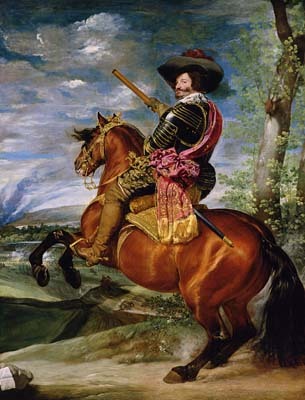Philip IV of Spain was born in 1605 and died in 1665, after an eventful and troubled reign of forty-four years. The number four featured heavily in the iconography created for him by the eloquent and ingenious panegyrists of his court. Described variously by his flatterers as “the Jupiter of Spain”, “the Christian Jupiter” and “the Catholic Caesar”, he was known above all as “the Planet King” – an appellation inspired by the notion that, just as Philip was the fourth monarch of that name, so he deserved comparison with the sun, fourth planet in the then traditional hierarchy of the stars. Like the sun, the rays of his enlightened rule touched every corner of the known world. That, at least, was the theory. In practice, his life turned out to be a long, hard lesson in the gulf that separates myth from reality.
This year marks the four hundredth anniversary of Philip IV’s birth. Proving, perhaps, that ancient numerological superstitions still distantly haunt the city that he once ruled, the Prado Museum in Madrid has chosen to celebrate his quatercentenary in ambitious style. “Paintings for the Planet King” is a fascinating albeit somewhat flawed attempt to commemorate, and partially recreate, one of the most extraordinary episodes in the history of Western European taste. Its subject is the uniquely extravagant decoration of a vast and long-since vanished complex on the outskirts of the old city of Madrid – a place designed to serve, simultaneously, as occasional royal retreat, as home to one of the largest art collections ever assembled and, perhaps above all, as a palace of propaganda. It was known as the “Buen Retiro”, or pleasant retreat. Built with astonishing speed, given its scale, this sprawling array of red-brick buildings was the brainchild of Philip IV and his principal...

Paintings for the Planet King at the Prado Museum, Madrid 2005
24-07-2005

